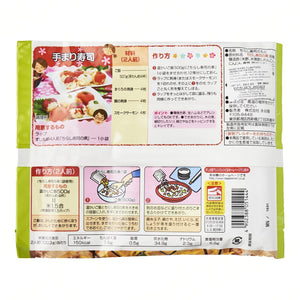

And jubilant yellow cubes of tamago, a lightly sweetened Japanese omelet commonly used for chirashi, added richness and contrast. Cucumber sliced razor-thin gave crunch and bursts of green. Inside each was a ribbon of shiso leaf (“It is a little herbaceous, but subtle enough to still let you taste the flavor of the fish,” Lim says) that barely peeked through. In the version he prepared for me, Lim added meaty pearls of salmon roe (ikura), as well as cooked squid, (ika), scored and rolled into tiny spirals. Chef Mike Lim, executive sushi chef at Roka Akor, explains that in Japan, most cooks will age raw fish for a few days so it firms up. Classically, seafood toppings include raw fish like tuna, salmon, mackerel, or yellowtail (hamachi)-usually cut slightly thicker than they would be for sashimi, a saving grace in preparing it at home. Chirashi sushi is also known by the names bara sushi and gomoku sushi, with differences in their meaning depending on the location where its made. In Japanese restaurants, chirashi is commonly served in lacquered bowls or boxes and eaten with chopsticks. In Japan, you’ll see chirashi bowls in high-end restaurants and on to-go shelves. The toppings like fish or vegetables can be raw or cooked in either, but the former is more common in Kanto style, and the latter, Kansai. Gomoku chirashi, from the Kansai region (where Kyoto and Nara are located), differs in that the rice is stirred together with the ingredients, more like a rice salad. The alternate naming conveys the regional nuances and helps distinguish the dish from the other chirashi (Type 1 above). Edomai chirashi, from the Kanto region of Tokyo, features a myriad of mostly raw accompaniments fanned out atop the rice in a decorative layer. Depending on the regions, chirashi sushi is also called gomoku sushi (), gomoku chirashi (), or barazushi (). In Japan, the serving style differs by region. “Everything is easy to source and quick to assemble,” he says, especially because you can buy small quantities of fish and other ingredients straight from a Japanese market or many seafood counters)-Bian’s advice for novices, and my favorite trick for keeping prep time to a minimum. Once the rice has cooled, place it onto a serving. Open the chirashi sushi rice mix pack and mix in one sachet with the warm rice using a ride paddle or large spoon. There is no need to make this sushi rice as we will add the rice vinegar later. A more country-style preparation than nigiri, it’s a more everyday, go-to food for home cooks in Japan, says chef Ce Bian of Chicago’s Roka Akor Japanese robata (grill) and sushi restaurant, adding that most people make it for lunch, and usually for one. Start by cooking 500g of Japanese rice as per the cooking instructions on the packet of the rice.

Noodle Salad with Fresh Vegetables and Ginger Pean.In Japanese, the word chirashi means “scattered,” referring to way the toppings are typically doled out across the rice.Kansai style (bara-zushi) with cooked shrimp, eel, omelet, cucumbers Gomuki style with shiitake mushrooms, kanpyo, koyadofu, and omelet My version had pieces of shrimpa and unagi (eel) along with tamgo yaki (egg) and cucumbers and avocados. This one was similar to the first type, however the ingredients are cut into large pieces and can include meat or fish. We also made another type of chirashi-zushi called Bara-zushi, or Kansai style chirashi-zushi. For those who want a vegetarian sushi you can't beat the gomoki chirashi-zushi. When my mother made this type of chirashi-zushi she would use a can of "chirashi-zushi no moto" and now I see why! However, my version here was so tasty and fresh. I made all the ingredients from scratch, a huge undertaking considering all the simmering and chopping, especially simmering the dried shiitake mushrooms and getting the taste and texture just right. The first was gomoku chirashi zushi, a typical homestyle version using cooked carrots, simmered shiitake mushrooms, lotus root, shredded omelet and kampyo (simmered gourd), along with some pickled ginger and nori. This class highlighted three types of chirashi-zushi, or tossed sushi.


 0 kommentar(er)
0 kommentar(er)
